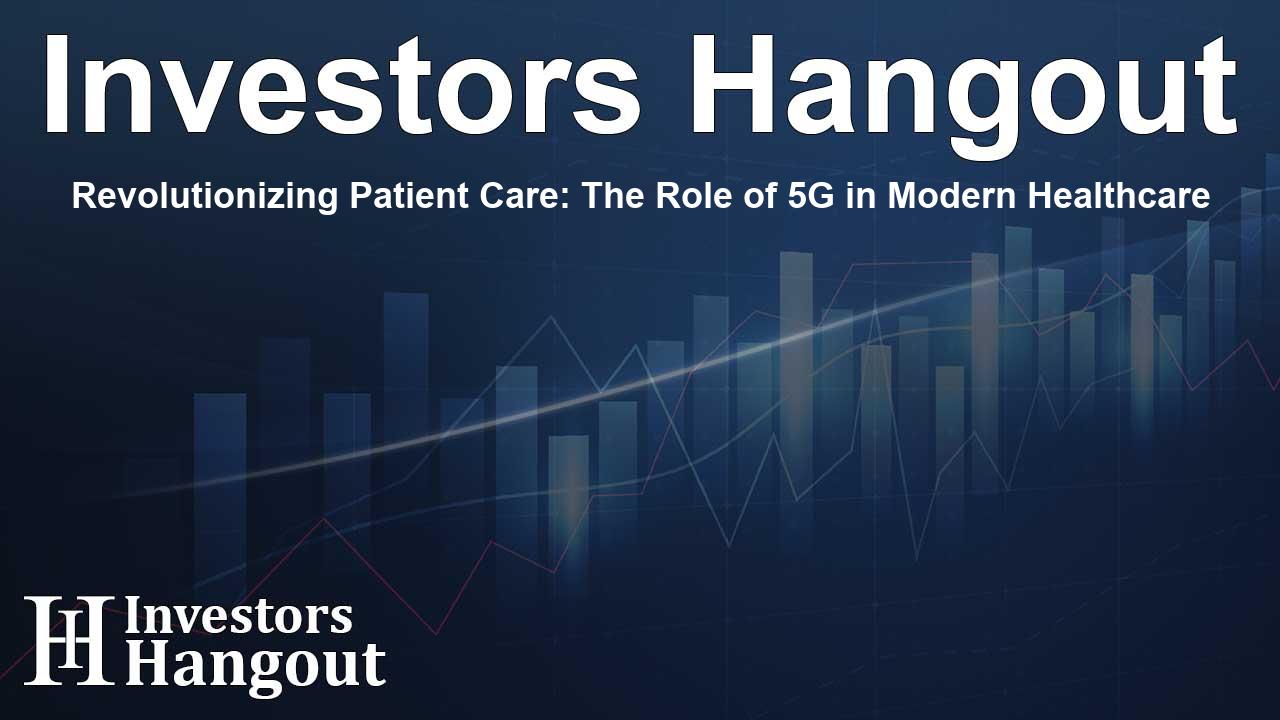Revolutionizing Patient Care: The Role of 5G in Modern Healthcare

The Expanding Horizon of 5G in Healthcare
The global healthcare sector is on the verge of a significant technological transformation, driven by the adoption of 5G technology. The healthcare market is projected to reach a staggering valuation of US$ 808.40 billion by the year 2033, primarily fueled by an impressive compound annual growth rate (CAGR) of 31.83%. This revolution is not merely a spectacle; it's a nuanced evolution facilitated by the integration of advanced connectivity solutions.
Infrastructure Enhancements Enable 5G Adoption
A foundation of advanced hardware is crucial for the successful implementation of 5G in healthcare. Many facilities are in the process of upgrading their existing infrastructure, including routers and base stations, to support the demands of high-speed 5G connectivity. It is estimated that by 2025, a significant segment of healthcare establishments will adopt network slicing technologies, which offer customized data streaming suited to various healthcare applications.
Edge Computing: Powering Real-Time Care
One pivotal technology propelling this revolution is edge computing. Hospitals are increasingly deploying edge servers that minimize data processing delays, essential for time-sensitive medical decisions. The deployment of these systems has proven effective in improving the speed and accuracy of diagnoses, as they facilitate AI-driven analytics directly at the point of care.
Innovative Medical Devices Taking Center Stage
Equally important are the specialized medical devices that leverage 5G technology. Recent surveys indicate that a large percentage of medical device manufacturers are ramping up production of 5G-enabled imaging machines. These devices are critical in enhancing the quality of remote consultations, enabling healthcare professionals to obtain high-resolution data instantaneously, thereby minimizing patient wait times in rural clinics.
The Impact of Remote Patient Monitoring
Remote Patient Monitoring (RPM) epitomizes the potent applications of 5G in the healthcare landscape. This technology allows healthcare professionals to track patients' health remotely, particularly beneficial for those managing chronic conditions. With increasing adoption rates, healthcare providers report a remarkable decrease in hospital readmission rates, which correlates strongly with the implementation of RPM solutions.
Gaining Insights from Data
The real-time data capabilities of 5G allow healthcare professionals to intervene promptly, potentially averting acute health episodes. Additionally, advancements in wearable technology are gaining traction, with devices that monitor vital signs, such as heart rate and glucose levels, providing instant updates to healthcare providers.
Healthcare Providers Driving Market Growth
Around 62% of the market share is held by healthcare providers themselves, reflecting their strong engagement in the development and implementation of 5G technologies. Many leading healthcare systems globally are actively pursuing collaborations with telecom operators to expand their 5G capabilities, indicating a robust commitment to integrating technology with patient care.
Fostering Innovation in Surgical Procedures
5G is likewise transforming surgical procedures, enabling surgeons to rely on real-time data exchange and remote assistance during operations. This connectivity enhances safety and precision, with robotic-assisted surgeries becoming increasingly common as technology improves.
Maintaining Ethical Standards in 5G Adoption
As 5G continues to take root in healthcare practices worldwide, regulatory bodies are working to ensure ethical compliance and patient safety. Many governments are shifting their frameworks to incorporate secure data practices, crucial for safeguarding sensitive patient information.
Future Prospects in 5G Healthcare
The adoption of 5G-based medical services is not likely to plateau anytime soon. Ongoing research and development, coupled with a growing acceptance of technology within diagnostics and treatment protocols, point to a future where 5G is seamlessly integrated into everyday healthcare practices.
Frequently Asked Questions
What is the projected market value of 5G in healthcare by 2033?
The 5G in healthcare market is projected to reach US$ 808.40 billion by 2033.
How does 5G enable remote patient monitoring?
5G allows for real-time data transmission, helping healthcare providers monitor patients' health remotely and improve intervention time.
Why is edge computing crucial for 5G in healthcare?
Edge computing processes data closer to the patient, minimizing delays and enabling quicker, more accurate medical decision-making.
What role do healthcare providers play in the 5G sector?
Healthcare providers hold over 62% of the market share, actively participating in the development and integration of 5G applications.
What ethical considerations accompany the use of 5G in healthcare?
Ensuring patient data security and establishing consent protocols are key ethical considerations as 5G technology is increasingly integrated into healthcare.
About Investors Hangout
Investors Hangout is a leading online stock forum for financial discussion and learning, offering a wide range of free tools and resources. It draws in traders of all levels, who exchange market knowledge, investigate trading tactics, and keep an eye on industry developments in real time. Featuring financial articles, stock message boards, quotes, charts, company profiles, and live news updates. Through cooperative learning and a wealth of informational resources, it helps users from novices creating their first portfolios to experts honing their techniques. Join Investors Hangout today: https://investorshangout.com/
Disclaimer: The content of this article is solely for general informational purposes only; it does not represent legal, financial, or investment advice. Investors Hangout does not offer financial advice; the author is not a licensed financial advisor. Consult a qualified advisor before making any financial or investment decisions based on this article. The author's interpretation of publicly available data shapes the opinions presented here; as a result, they should not be taken as advice to purchase, sell, or hold any securities mentioned or any other investments. The author does not guarantee the accuracy, completeness, or timeliness of any material, providing it "as is." Information and market conditions may change; past performance is not indicative of future outcomes. If any of the material offered here is inaccurate, please contact us for corrections.